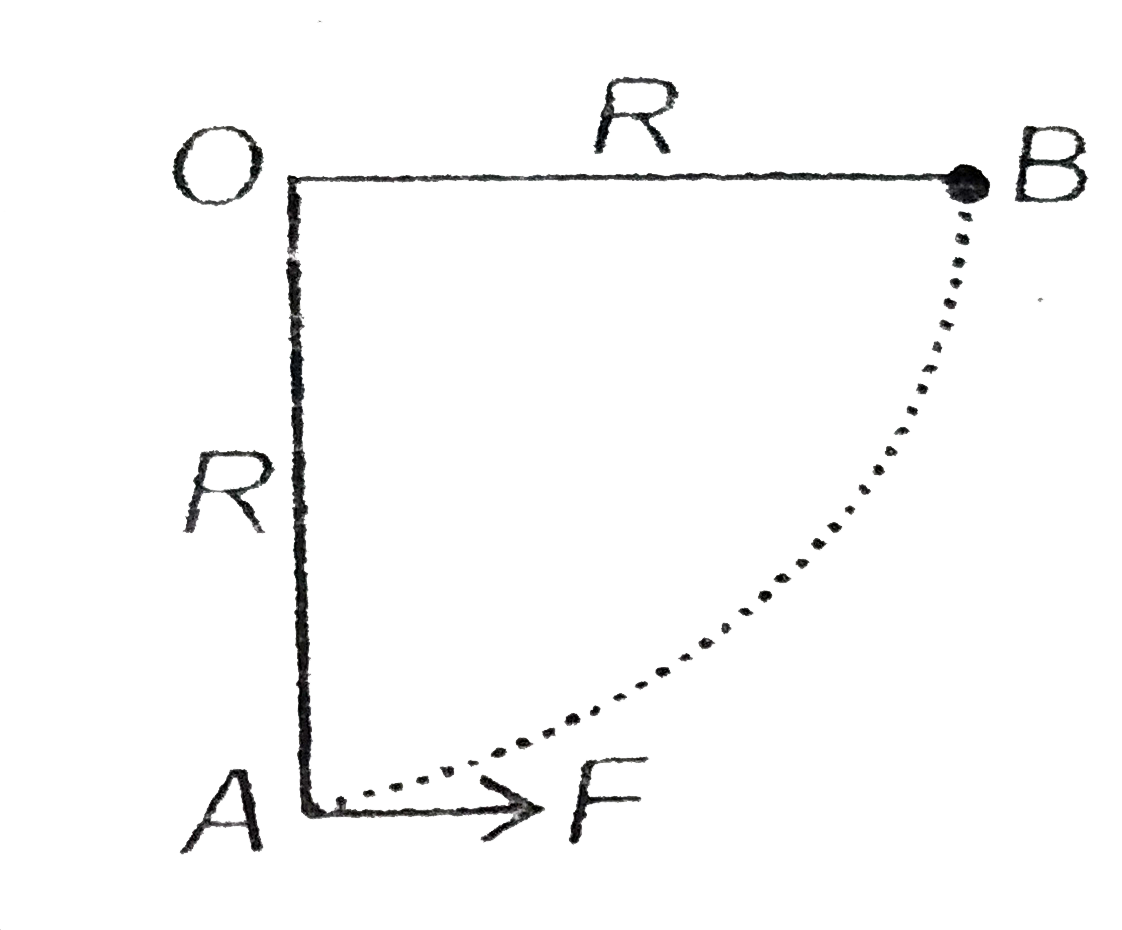A block of mass 30 kg is pulled up by a rope as shown in Fig. with a constant speed by applying a force of 200 N parallel to the slope. A and B are initial and the final positions of the block. Calculate:
(a) the work done by the force in moving the block A to B,
(b) the potential energy gained by the block,
(c) account for the difference in work done the force and the increase in potential energy of the block.

The correct Answer is:A, B, C, D
Here, m = 30kg, F = 200N, s =AB =3m, h =1.5m
(a) Work done by the force in moving the block form A to B, i.e., W =F s =(200N)(3m) =60J
(b) Potential energy gained by the block Ep=mgh=(30kg)(10m/s2)(1.5m)=450J
(c ) The difference (600J - 450 J =150J) is used in doing work against friction between the block and the
slope. This energy is converted into heat.
Topper's Solved these Questions
- WORK AND ENERGYBOOK - PRADEEPCHAPTER - WORK AND ENERGYEXERCISE - Continuous Assessment
24 Videos
- WORK AND ENERGYBOOK - PRADEEPCHAPTER - WORK AND ENERGYEXERCISE - Assessment Through paper pen Test
30 Videos
- WORK AND ENERGYBOOK - PRADEEPCHAPTER - WORK AND ENERGYEXERCISE - Multiple choice Questions
9 Videos
- SOUNDBOOK - PRADEEPCHAPTER - SOUNDEXERCISE - Model Test (sec - B)
12 Videos
Similar Questions
A force F is applied on a block of mass M. The block is displaced through a distance d in the direction of the force. What is the work done by the force on the block? Does the internal energy change because of this work?
View SolutionA block of mass M is attached to a uniform rope of mass m. This arrangement is pulled by applying a force F at the rope as shown. Find the tension in the rope (a) at the junction of the rope and the block (b) at the mid point of the rope.
View Solution
Knowledge Check
A 5 kg block is lifted vertically through a height of 5 metre by a force of 60N. Determine (i) the work done by applied force in lifting the block, (ii) the potential energy of the block at 5m, (iii) the kinetic energy of the block at 5 m (iv) the velocity of the block at 5 m-
A300J,245J,55J,4.69m/sB200J,245J,50J,4.69m/sC150J,150J,50J,4.69m/sD300J,245J,100J,10.69m/s
A block of mass M is pulled along a horizontal frictionless surface by a rope of mass m . A force P is applied to the other end of the rope . (a) Find the acceleration of the block and the rope . (b) Find the force that the rope exerts on the block M in terms of P, M and m .
View SolutionA cord is used to vertically lower an initially stationary block of mass M at a constant downward acceleration of g/4. When the block has fallen a distance d, find (a) the work done by the cord's force on the block, (b) the work done by the graviational force on the block, (c) the kinitic energy of the block, and (d) the speed of the block.
View SolutionA block of mass M is pulled along a horizontal frictionless surface by a rope of mass m as shown in A horizontal force F is applied to one end of the rope. Find
(a) the acceleration of the rope and block
(b) the force that the rope exerts on the block
(c) the tension in the rope at its mid point

View SolutionA block of mass 10 kg slides down on an incline 5 m long and 3 m high. A man pushes up on the ice block parallel to the incline so that it slides down at constant speed. The coefficient of friction between the ice and the incline is 0.1. Find :
(a) the work done by the man on the block.
(b) the work done by gravity on the block.
(c) the work done by the surface on the block.
(d) the work done by the resultant forces on the block.
(e) the change in K.E. of the block.
View SolutionA block of mass 0.4kg is pulled along the curve path CAN slowly by a tangential force as shown in figure. The work done by the applied force when the block moves from A to B is

View SolutionA block of mass 1kg is pushed up a surface inclined to horizontal at an angle of 30∘ by a force of 10N parallel to the inclined surface [figure]. The coefficient of friction between block and the incline is 0.1. If the block is pushed up by 10 m along the incline, calculate
(a) work done against gravity
(b) work done against force of friction
(c) increase in potential energy
(d) increase in kinetic energy
(e) work done by applied force.

View SolutionA block of mass m is taken from A to B under the action of a constant force F. Work done by this force is

View Solution
